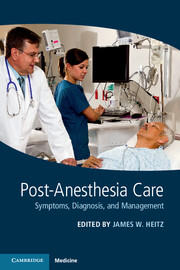Section III - Special considerations
Published online by Cambridge University Press: 05 August 2016
- Type
- Chapter
- Information
- Post-Anesthesia CareSymptoms, Diagnosis and Management, pp. 309 - 363Publisher: Cambridge University PressPrint publication year: 2016

